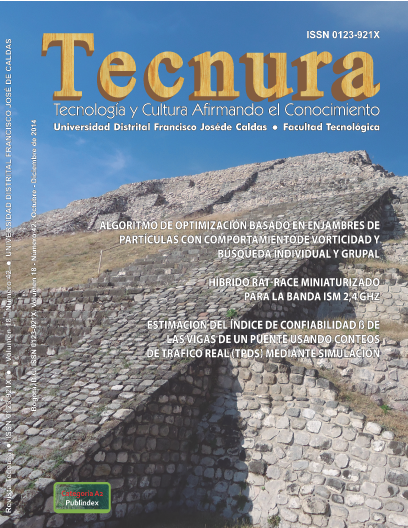DOI:
https://doi.org/10.14483/22487638.8056Publicado:
01-10-2014Número:
Vol. 18 Núm. 42 (2014): Octubre - DiciembreSección:
EditorialEditorial
Descargas
Cómo citar
APA
ACM
ACS
ABNT
Chicago
Harvard
IEEE
MLA
Turabian
Vancouver
Descargar cita
Editorial
The new classification and recognition of research groups model includes as one of the measurement variables, human resources training in STI (Science, Technology and Innovation) and one of their indicators are the graduate thesis.
It has been common for many people who achieve a college degree, experience a mixture of feelings between joy, worry, confusion and even fear, because although this phase is ending and they can see the light at the end of the road; for many it's not totally happiness!: A graduate thesis is required! This is where chaos is generated, because despite years of exposure to knowledge and scholarship and to interact in society in different roles, is expected that ALL students can communicate and argue; how to expose an idea that convince the reader and contribute to knowledge, that leave its own mark.
It is important to find out why this process is so difficult. One of the main reasons is because the student does not have a theme to develop, another because is unclear where to seek about. But ifhe has already chosen the theme, the difficulty arises in the lack of communicating tools. That is why I want to share about two documents that I had available when I was preparing my master's degree thesis. The first, The Craft of Research, provides guidance on how to structure the research background, and the second, A Rulebook for Arguments), provides the tools to present the investigation results. Its author says: to argue is to give a number of reasons or evidence supporting a conclusion and helps to discern which the best point of view is (Weston, 1997).
The authors explain that the first thing you should do is to investigate the main information needed to answer the question that will help solve the problem. This is where writing becomes so important to remember everything and see more clearly the relationship between ideas. Write lets think better, remember more and see the whole picture (Both et al 1996).
The book A Rulebook for Arguments set out 30 recommendations to consider in drafting:
- Distinguish premises and conclusions.
- Present ideas in a natural order.
- Start by real premises.
- Use precise, specific and concrete language.
- Do not use ornate language.
- Use consistent terms.
- Use only one meaning for each word.
- Wondering: There is more than one example.
- Check if the examples are representative.
- Consider the information background.
- Identify if there counterexamples.
- If analogies are used, they require relevant examples.
- Sources should be cited.
- Know if the sources are well informed.
- Know if the sources are unbiased.
- Sources must be cross
- Personal attacks do not disqualify the source
- The argument explains the causes leading to the facts
- The conclusion suggests the most likely cause
- Correlated events are not necessarily related
- Correlated events should have a common cause
- Any of the two (2) correlated events can be the cause of another
- Causes can be complex
Given the above, it can be concluded that the drama of the grade work is based on the situation that having to face a great responsibility, the student can experience the feeling of not being prepared to assume it. Part of our work as researchers and teachers is to demystify academic writing and encourage our students to develop these skills. This can actually contribute more to the scientific production of our groups even large investments in laboratory equipment, without the latter no longer needed or taken into account when considering strategies that strengthen the research process.
REFERENCES
Both W. C., Colomb, G. y Williams, J. (1996). The Craft of Research. Weston, A. (1997). A Rulebook for Arguments.
C�sar Augusto Garc�a-Ubaque
Director
Licencia
Esta licencia permite a otros remezclar, adaptar y desarrollar su trabajo incluso con fines comerciales, siempre que le den crédito y concedan licencias para sus nuevas creaciones bajo los mismos términos. Esta licencia a menudo se compara con las licencias de software libre y de código abierto “copyleft”. Todos los trabajos nuevos basados en el tuyo tendrán la misma licencia, por lo que cualquier derivado también permitirá el uso comercial. Esta es la licencia utilizada por Wikipedia y se recomienda para materiales que se beneficiarían al incorporar contenido de Wikipedia y proyectos con licencias similares.


